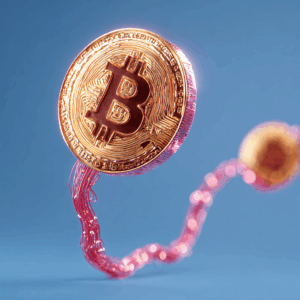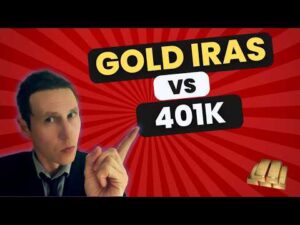
Bitcoin's Consolidation on 1-Hour Chart
Bitcoin's 1-hour chart shows a period of consolidation, with the price of BTC moving without a clear direction compared to longer timeframes. However, there was a significant drop to around $42,056, possibly indicating a purge of stop-loss orders or a brief panic sell-off following the approval of the spot bitcoin exchange-traded fund (ETF). Nevertheless, the market quickly recovered from this dip.
Downtrend on 4-Hour Chart
The 4-hour chart provides a clearer view of a downtrend in Bitcoin's price. It is characterized by lower highs and lower lows. The volume during the downswings is notably higher, indicating stronger selling pressure. Resistance has formed near the $45,000 level, which previously acted as support. Currently, the path of least resistance seems to be on the downside, as the market still exhibits bearish undertones.
Confirmation of Downtrend on Daily Chart
The daily chart confirms the longer-term downtrend observed on the 4-hour analysis. There is a significant long-term support area around $36,727, which has previously resulted in considerable price bounces. The current price action is confined within a range between this support and the approximate $45,000 resistance level. For those considering long-term positions, entry points near the bottom of this range, with confirmation of support holding, might be worth considering.
Neutral Stance on Oscillators
Bitcoin's oscillators on Jan. 17, 2024, show a predominantly neutral stance. The relative strength index (RSI) stands at 47, the Stochastic at 17, and the commodity channel index (CCI) at -61 – all indicating neutrality. However, the momentum indicator at -1365 and the moving average convergence/divergence (MACD) level at 83 suggest a bearish undertone to the overall neutral outlook.
Mixed Signals from Moving Averages
Bitcoin's moving averages (MAs) also provide mixed signals. Shorter-term exponential moving averages (EMAs) and simple moving averages (SMAs) for 10, 20, and 30 days indicate negative sentiment, while longer-term averages for 50, 100, and 200 days suggest a strong bullish sentiment. This disparity highlights the tension between immediate bearish trends and a potential bullish undercurrent in the longer term.
Bullish Outlook for BTC
Despite the mixed signals and short-term bearish trends, the long-term outlook for Bitcoin remains positive. The resilience shown at major support levels, coupled with the buying interest reflected in the longer-term moving averages, suggests a potential upward trajectory. Investors with a long-term perspective may find this an opportune moment to consider entry, as the market could be gearing up for a bullish reversal.
Bearish Sentiment for Bitcoin
The bearish indicators dominating the short-term charts point to an ongoing downtrend for Bitcoin. The lower highs and lower lows, particularly evident in the 4-hour chart, coupled with stronger selling pressure and bearish oscillator readings, suggest that the market could continue to face downward pressure. Short-term traders might find opportunities in short positions, capitalizing on pullbacks and resistance levels.
What are your thoughts on Bitcoin's market action on Wednesday? Share your opinions in the comments section below.
Frequently Asked Questions
How much should precious metals be included in your portfolio?
Before we can answer this question, it is important to understand what precious metals actually are. Precious metals refer to elements with a very high value relative other commodities. This makes them extremely valuable for trading and investing. Gold is by far the most common precious metal traded today.
But, there are other types of precious metals available, including platinum and silver. While gold's price fluctuates during economic turmoil, it tends to remain relatively stable. It is not affected by inflation or deflation.
In general, prices for precious metals tend increase with the overall marketplace. That said, they do not always move in lockstep with each other. If the economy is struggling, the gold price tends to rise, while the prices for other precious metals tends to fall. Investors expect lower interest rate, making bonds less appealing investments.
The opposite effect happens when the economy is strong. Investors are more inclined to invest in safe assets, such as Treasury Bonds, and they will not demand precious metals. They become less expensive and have a lower value because they are limited.
It is important to diversify your portfolio across precious metals in order to maximize your profit from precious metals investments. You should also diversify because precious metal prices can fluctuate and it is better to invest in multiple types of precious metals than in one.
How to Open a Precious Metal IRA
The first step in opening an Individual Retirement Account, (IRA), is to decide if it's something you want. To open the account, complete Form 8606. Then you must fill out Form 5204 to determine what type of IRA you are eligible for. This form should be filled within 60 calendar days of opening the account. Once this has been completed, you can begin investing. You could also opt to make a contribution directly from your paycheck by using payroll deduction.
To get a Roth IRA, complete Form 8903. Otherwise, the process is identical to an ordinary IRA.
To be eligible to have a precious metals IRA you must meet certain criteria. The IRS stipulates that you must have earned income and be at least 18-years old. You cannot earn more than $110,000 annually ($220,000 if married filing jointly) in any one tax year. Contributions must be made regularly. These rules apply regardless of whether you are contributing directly to your paychecks or through your employer.
An IRA for precious metals allows you to invest in gold and silver as well as platinum, rhodium, and even platinum. You can only purchase bullion in physical form. You won't have the ability to trade stocks or bonds.
You can also use your precious metals IRA to invest directly in companies that deal in precious metals. This option can be provided by some IRA companies.
There are two main drawbacks to investing through an IRA in precious metallics. They aren't as liquid as bonds or stocks. This makes it harder to sell them when needed. They also don't pay dividends, like stocks and bonds. Therefore, you will lose money over time and not gain it.
How much is gold taxed under a Roth IRA
An investment account's tax is calculated based on the current value of the account, and not on what you paid originally. So if you invest $1,000 in a mutual fund or stock and then sell it later, any gains are subject to taxes.
But if you put the money into a traditional IRA or 401(k), there's no tax when you withdraw the money. Dividends and capital gains are exempt from tax. Capital gains only apply to investments more than one years old.
The rules governing these accounts vary by state. Maryland is an example of this. You must withdraw your funds within 60 calendar days of turning 59 1/2. You can delay until April 1st in Massachusetts. New York allows you to wait until age 70 1/2. To avoid penalty fees, it is important to plan and take distributions in time to pay all your retirement savings.
Statistics
- The price of gold jumped 131 percent from late 2007 to September 2011, when it hit a high of $1,921 an ounce, according to the World Gold Council. (aarp.org)
- This is a 15% margin that has shown no stable direction of growth but fluctuates seemingly at random. (smartasset.com)
- Gold is considered a collectible, and profits from a sale are taxed at a maximum rate of 28 percent. (aarp.org)
- You can only purchase gold bars at least 99.5% purity. (forbes.com)
- Instead, the economy improved, stocks rebounded, and gold plunged, losing 28 percent of its value in 2013. (aarp.org)
External Links
bbb.org
finance.yahoo.com
law.cornell.edu
- 7 U.S. Code SS 7 – Designation of boards of trade as contract markets
- 26 U.S. Code SS 408 – Individual retirement accounts
cftc.gov
How To
How to hold physical gold in an IRA
The best way of investing in gold is to purchase shares from companies that produce gold. However, there are risks associated with this strategy. It isn't always possible for these companies to survive. Even if the company survives, they still face the risk of losing their investment due to fluctuations in gold's price.
Another option is to purchase physical gold. You will need to either open an online or bank account or simply buy gold from a reliable seller. This option is convenient because you can access your gold when it's low and doesn't require you to deal with stock brokers. It is easier to view how much gold has been stored. You will receive a receipt detailing exactly what you paid. You are also less likely to be robbed than investing in stocks.
There are however some disadvantages. You won't be able to benefit from investment funds or interest rates offered by banks. You won't have the ability to diversify your holdings; you will be stuck with what you purchased. The taxman might also ask you questions about where your gold is located.
BullionVault.com offers more information on buying gold for an IRA.
—————————————————————————————————————————————————————————————-
By: Jamie Redman
Title: Bitcoin Technical Analysis: BTC Balances Above $42,000 Amidst Downtrend Signals
Sourced From: news.bitcoin.com/bitcoin-technical-analysis-btc-balances-above-42000-amidst-downtrend-signals/
Published Date: Wed, 17 Jan 2024 14:48:44 +0000
Related posts:
 Ethereum Price Analysis: Bearish and Bullish Signals in the Market
Ethereum Price Analysis: Bearish and Bullish Signals in the Market
 Bitcoin Technical Analysis: BTC Navigates Choppy Waters and Uncertainty
Bitcoin Technical Analysis: BTC Navigates Choppy Waters and Uncertainty
 Ethereum Technical Analysis: ETH Faces Downward Pressure; Bearish Trends Emerge Amidst Market Volatility
Ethereum Technical Analysis: ETH Faces Downward Pressure; Bearish Trends Emerge Amidst Market Volatility
 Bitcoin Technical Analysis: BTC’s Consolidation Phase Signals Cautious Market Approach
Bitcoin Technical Analysis: BTC’s Consolidation Phase Signals Cautious Market Approach












